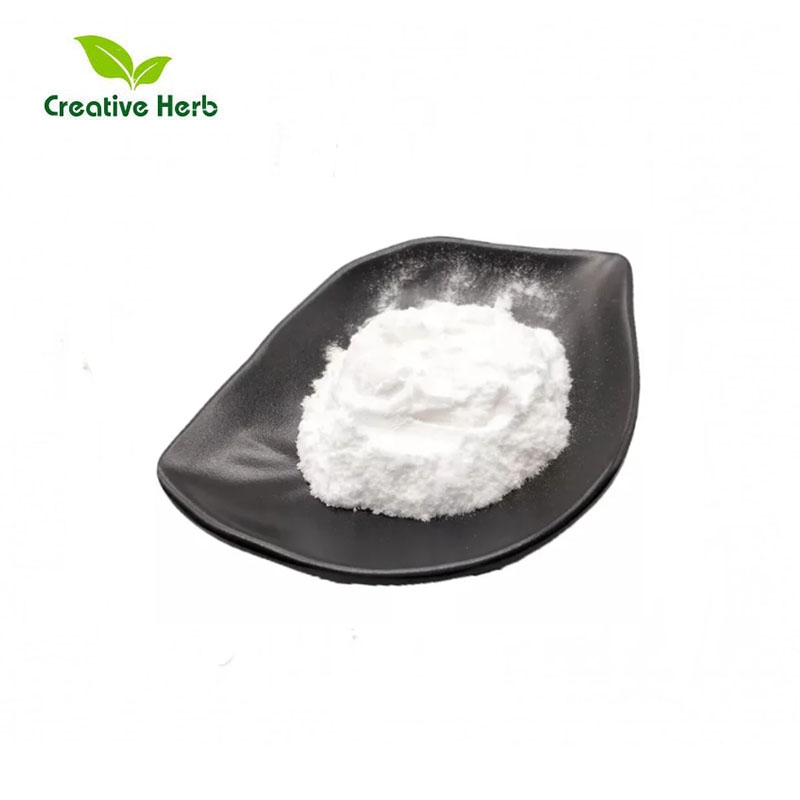Several CNS and its subjournals report the progress of cancer-related protein research
-
Last Update: 2019-05-15
-
Source: Internet
-
Author: User
Search more information of high quality chemicals, good prices and reliable suppliers, visit
www.echemi.com
May 15, 2019 news / BIOON / - protein plays a key role in the occurrence, development, metastasis and recurrence of cancer - the so-called carcinogenic protein, tumor suppressor protein In order to understand the research status of these cancer-related proteins, this article summarizes the latest research progress of cancer-related proteins in recent CNS and its sub journals, and we will learn together! 【1】 Nature: it is revealed that nnmt is the main metabolic regulatory protein of cancer-related fibroblasts doi: 10.1038/s41586-019-1173-8 in a new study, researchers from the University of Chicago and other research structures in the United States passed the The systematic investigation of the surrounding tissues, especially the normal cells called fibroblasts, reveals that a new therapeutic target may potentially prevent the rapid spread and prognosis related to hgsc The researchers analyzed the expression of more than 5000 proteins in normal and cancerous tissues from a small sample bank of patients For the first time, they were able to distinguish molecular changes in cancer cells from those in the surrounding matrix as the disease progressed When they got their data, they found that, contrary to cancer cells, metastatic stroma had highly conserved protein characteristics These metastatic changes were observed in all patients analyzed They are now trying to understand their functional role in cancer metastasis in order to find new therapeutic targets In this process, they found a metabolic enzyme, nicotinamide N-methyltransferase (nnmt), which is highly expressed in the matrix around metastatic cancer cells They found that nnmt causes a wide range of gene expression changes in the tumor matrix, thus transforming normal fibroblasts into cancer-related fibroblasts that support and accelerate tumor growth The expression of nnmt in stroma promotes the progression and metastasis of ovarian cancer This is related to very poor patient outcomes Photo source: Science Advanced these researchers are now using high-throughput screening to find new ways to inhibit this enzyme They also found that inhibition of nnmt activity reduced or even reversed many of the tumor promoting effects of cancer-related fibroblasts They point out that this suggests that the matrix should be explored as a new therapeutic target 【2】 Science subjournal: scientists found that the protein doi: 10.1126/sciadv.aaw1616, which mediates the key life activities of cancer cells, has some proteins (called chaperones and common chaperones) whose function is to construct these protein complexes in cells, and the inhibition of this assembly process is being studied as an anti-cancer strategy We can compare kinases and enzymes, such as mTOR, ATR or telomerase, to buildings under construction, and chaperones (such as Hsp90) and chaperones (such as r2tp) are the machines for construction Current evidence suggests that targeting ruvbl1-ruvbl2 has the potential to treat cancer Ruvbl1-ruvbl2 is the energy engine accompanying r2tp This allowed researchers from the DNA damage response research group of the National Cancer Research Center (CNIO) in Spain to use powerful frozen electron microscopy tools to determine the mechanism of regulating ruvbl1 and ruvbl2, which was published in the journal science advances The high-resolution structure of r2tp was determined by the team of macromolecular complexes in DNA damage reaction using low-temperature electron microscope In this study, CNIO researchers looked at how cells designed r2tp to bring chaperone Hsp90 into contact with the proteins it works on R2tp complex has an energy engine, a ring composed of ATPase ruvbl1 and ruvbl2, which can generate ADP by using the energy released by ATP hydrolysis In this energy generation mechanism, ATPase captures ATP in cells and continuously releases ADP as waste and energy Scientists found that in the ring formed by ruvbl1 and ruvbl2, the ATP binding site pathway was completely blocked, and ATP or ADP remained in the ring, thus hindering the energy exchange and motor work The problem is, how to use the energy needed to assemble protein complex? Researchers observed r2tp system through low-temperature electron microscope, and found an area in ruvbl2, which is a channel to control ATP and ADP to enter into protein; this process requires the energy provided by ATP The key to regulating the opening of this door is the interaction between the r2tp components required for the assembly of ATPase ruvbl2 and mTOR 【3】 SCI signal: the deletion of key proteins can inhibit the movement of cells doi: 10.1126/scientific.aav5938 UConn researchers reported in the journal Science signaling that cells without a certain protein on their surface cannot move normally The study will provide insight into how cells move and repair wounds in normal tissue, and how cancer spreads through the body Malika Ghosh and Linda Shapiro, vascular biologists at UConn health, want to know how a common protein found in the skin of cells, called the cell membrane, affects this type of movement The protein, called CD13, passes through the cell membrane, interacting with the inside of the cell at one end and the outside at the other CD13 has many different functions, including binding cells in place and helping cells communicate with each other To test the role of CD13 in cell movement, Ghosh, Shapiro and their colleagues first looked at mouse fibroblasts, scaffold cells that hold tissues and organs together They added fibroblasts to a dish full of fibronectin, a substance that finds integrins outside cells Remember, integrins are proteins that cells use to grab and drag through tissue Some fibroblasts are normal; others have knocked out the CD13 gene The researchers found that normal fibroblasts could move in a dish using the integrin method without any problems, but CD13 knockout fibroblasts could not move at all Then they dyed the nucleus blue, the integrin on the cell surface green, and watched what happened Normal fibroblasts pull all integrins in and recycle them about two hours later, and they reappear on the surface CD13 knockout fibroblasts also pulled all integrins inside two hours later, but integrins never reappeared Photo source: nature communications tried the same experiment as human cervical cancer cells and got the same results What seems to be happening is that CD13 acts as an organizer, collecting freshly recovered integrins and other essential proteins on the cell membrane, so that it can be rolled out when the cell needs to move 【4】 Nat commin: modification of special proteins or effective slowing down of tumor growth doi: 10.1038/s41467-019-09844-0-braf protein plays a very important role in the development of many types of cancer, including melanoma Now, researchers have found that BRAF can be activated by growth factors, and then stimulate the expression of downstream proteins, so as to promote the growth, invasion and survival of cancer cells; however, at present, researchers are not very clear how BRAF participates in the communication process with the signals released by pro-inflammatory factors, which can be released by immune cells in the tumor surrounding environment Recently, in a research report published in the international journal Nature communications, scientists from Moffett Cancer Research Center found that the signal pathway between cytokines and BRAF may promote tumor growth In this study, the researchers studied melanoma Cell lines and mice conducted studies to determine how communication signals from the immune system converge on BRAF and the effects of these signals They found that proinflammatory cytokines released by immune cells can stimulate ITCH protein to modify the ubiquitinated BRAF This ubiquitination modification can inhibit the interaction between BRAF and the inhibitory protein, thus maintaining the activity of BRAF and promoting its pricking Stimulate downstream proteins, and then promote cancer growth and metastasis The researchers pointed out that the itch modification of BRAF may play a key role in the carcinogenesis process Later, the researchers confirmed the location where the itch gene was removed from the cells, and the level of BRAF ubiquitination modification in the cells without itch was also low, and the level of activated downstream protein was also low In addition, the researchers also found that inhibiting the ubiquitination of BRAF can reduce the level of mouse body Tumor growth, so blocking the activity of itch or the ubiquitination of BRAF may be an effective treatment Finally, Lixin Wan, the researcher, said that this study revealed the key role of switch mediated BRAF ubiquitination modification in coordinating the signal between cytokines and activation of MAPK pathway in melanoma cells The addiction of melanoma cells to the switch-braf signal pathway suggests that switch may be a potential therapeutic target for melanoma with BRAF wild-type expression 【5】 SCI Rep: a special protein emitted by cancer cells may effectively promote tumor growth Doi: 10.1038/s41598-019-41678-0 recently, an international journal, scientific In the report, scientists from the University of Bradford found that prostate cancer cells may change the behavior of other cells around them, including normal cells, by spitting out special proteins in their nuclei This small piece of protein will be absorbed by the cells around the cancer cells, so as to promote tumor growth and help the cancer cells avoid the detection attack of the immune system Professor Richard Morgan, researcher, said that in order to survive, grow and spread, tumor tissue needs to control the behavior of cancer cells and surrounding cells In this study, we found the molecular mechanism behind this, and blocking this process may be a potential target to help researchers develop new anti-cancer therapies In this paper, researchers focus on a protein called en2, which plays a key role in the early development of the brain and has a high level in many types of cancer cells Photo source: nature researchers use green fluorescent probes to label protein en2, and then study its activity in a variety of cells, including human prostate cancer cells, normal prostate cells, bladder cancer cells, melanoma cells and leukemia Cells, the researchers found, cancer cells and normal cells will pick up this protein from other cells; in addition, the researchers also took delayed photography of prostate cancer cells, every 5 minutes, for 24 hours, they found that the cells will highlight the part containing green fluorescent protein, which will be absorbed by other dormant cancer cells, thus activating these dormant cells Cancer cells, change their shape and merge with them Morgan explained that cell fusion is very rare in cancer, and it is often directly related to the malignant progress of cancer At the same time, it will generate new nonverbal hybrid cells, which will easily spread to different sites of the body, and have a certain tolerance to chemotherapy and radiotherapy After molecular analysis of normal prostate cells, the researchers found that en2 protein intake can promote the expression of MX2 gene in cells, which has an antiviral effect; the researchers believe that cancer will try to reduce the chance of surrounding cells being infected by virus, so as to avoid the surveillance of host immune system, which may also destroy the effectiveness of immunotherapy 【6】 Nature: research found that
This article is an English version of an article which is originally in the Chinese language on echemi.com and is provided for information purposes only.
This website makes no representation or warranty of any kind, either expressed or implied, as to the accuracy, completeness ownership or reliability of
the article or any translations thereof. If you have any concerns or complaints relating to the article, please send an email, providing a detailed
description of the concern or complaint, to
service@echemi.com. A staff member will contact you within 5 working days. Once verified, infringing content
will be removed immediately.







